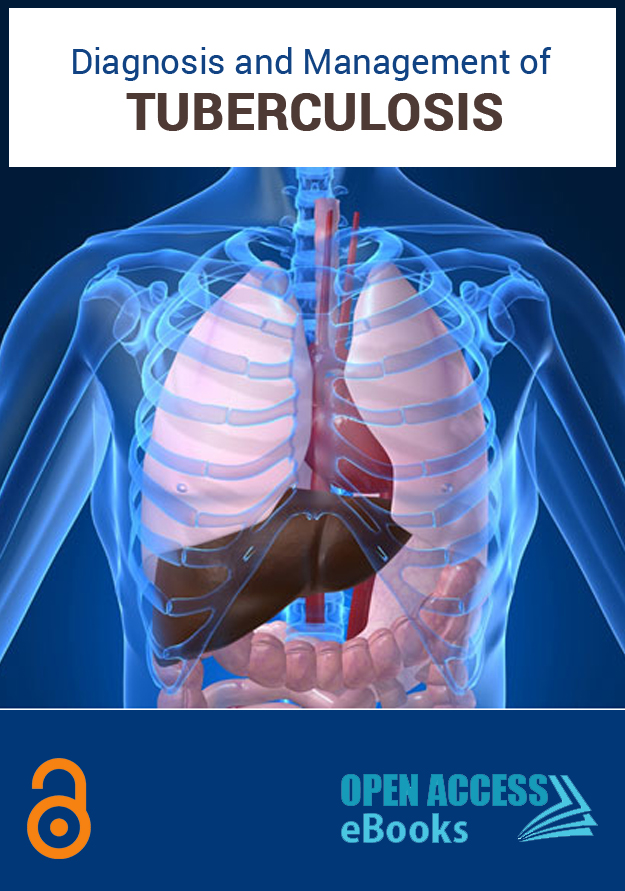List of Chapters
Tuberculosis: Propagation beyond Lungs
Author(s): Zeeshan Fatima*; Saif Hameed*; Venkata Saibabu; Sharda Sharma; Sandeep Hans
Tuberculosis (TB) caused by Mycobacterium tuberculosis (MTB) still remains a formidable global health challenge particularly considering the fact that one-third of the world's population are infected by TB as currently estimated by World Health Organization. The problem is compounded by the fact that roughly 10% of the infected people are symptomatic. Although TB affects the lungs in 80% of cases, however, in the remaining 20% the disease may affect other organs severely if lately diagnosed or left untreated. Hence, it is pertinent not only to diagnose early and initiate appropriate therapy but understand the pathogenesis of TB and its different types to prevent transmission. This chapter provides a consolidated gist of the different types of TB viz. Meningitis TB, Occular TB, Lymph node TB, Spinal TB, Cutaneous TB, Hepatic TB, Renal TB, Abdominal TB and Genital TB at common platform.
Tuberculosis of Rib
Author(s): Vivek Agrawal*; Ashesh Kumar Jha
Even in current era, incidence of tuberculosis remains high in certain parts of the world with more than half of the world's tuberculosis infected population residing in Asia [1]. In countries where tuberculosis is endemic or rampant due to poor socioeconomic status, malnutrition, emergence of multidrug resistant cases (MDR) and increasing association of TB with HIV infection; tuberculosis persists to pose a significant public health problem [2,3]. African population, the inhabitants of the Indian subcontinent and the Caribbean are most frequently affected by this disease.
Vaccination against Tuberculosis
Author(s): Salil Bhargava*; Satyadeo Choubey
Moving ahead of the World Health Organization Millennium Development goal targets for the tuberculosis (TB) set up till year 2015, the Sustainable Development Goals (SDGs) adopted by the United nations (UN) in 2015 has set one more goal i.e.point 3.3, as to eradicate the TB epidemic by the year 2030 [1]. Similarly,the World Health Assembly approved the WHO strategy to eradicate the TB in 2014 . The strategy aims for 95% reduction in TB deaths and 90% reduction in TB incidence rate by 2035 [2]. As per the WHO reports, an estimated 10.4 million cases occurred in 2015 including the 1.2 million people living with HIV/AIDS (PLHA). There were 1.8 million deaths due to TB of which 0.4 million were PLHAs. An estimated 480,000 developed multi drug resistant TB (MDR-TB) and an additional 100,000 were rifampicin resistant TB amenable for the second line treatment in 2015 [2].
Treatment response of retreatment category tribal Pulmonary Tuberculosis patients lived in Eastern India
Author(s): Rajib Saha*
Objective: The study was conducted to assess the treatment outcome of different category retreatment cases with the aim of finding out the important predictors of unfavorable outcomes. Methodology: This hospital based prospective cohort study was conducted in three Tuberculosis unit (TU) of west Midnapore (a district of eastern India), covering mostly the tribal populated areas. Patients who were registered for Category II anti-tuberculosis treatment between 1st quarter 2013 (Jan to Mar) to 4th quarter 2013 (Oct to Dec), were considered as our study cohort and they were followed upto December 2014. The study was started with 177 patients but ultimately ended with 165 patients. Results: Unfavorable outcome was observed among 24.8% patients. Among them mostly (51.2%) were defaulter, 22% were failure case and 26.8% patients died during treatment. Patients, who were minority by religion, were found 4 times more vulnerable for unfavorable outcome. Unfavorable outcome were found 7 times more common among retreatment TB cases who remain sputum positive after completion of initiation phase of category II treatment. Conclusion: Programmatic approach should be specified to address the minority by religion population and to reduce the load of sputum positive cases after completion of initiation phase treatment by tracking them.
Tuberculosis and its Diagnosis: A Review
Author(s): Abdul Jabbar
Mycobacterium genus covers more than 140 species, these species are divided into three major sets, that is, M.tuberculosis complex (MTBC), M.leprae, and mycobacteria other than tuberculosis(MOTT) [1]. The MTBC comprises of five species including M.tuberculosis, M.bovis, M.africanum, M.canetti, and M.microti that causing tuberculosis (TB) [2]. M.tuberculosis, is the primary cause of TB and it is the most prominent members of the MTBC. It is an obligate human pathogen and are the leading causes of death all over the globe [3]. The size of the Mycobacteriumis less than 5μ and the generation time of this bacterium is 18-24 hours [4]. They are obligate aerobes. It resists decolonization dyes like Sulphuric acid and acid alcohol because its cell wall contains mycolic acid. Therefore, this bacillus is also termed as "Acid fast bacilli" [5].
Tuberculosis: New Laboratory Diagnostic Methods and Treatment
Author(s): Hongfei Duan; Zihui Li; Xiaojing Zheng; Zongde Zhang*; Naihui Chu*
Tuberculosis (TB) still remains one of the world's deadliest communicable diseases. The World Health Organization (WHO) estimated that there were 10.4 million new TB cases worldwide and 1.4 million TB deaths in 2015. People living with HIV accounted for 1.2 million (11%) of all new TB cases [1]. Because of the slow growth rate of the causative pathogen Mycobacterium tuberculosis, isolation, identification, and drug susceptibility testing (DST) of this organism can take several weeks or longer. In recent years, many new laboratory diagnostic methods have been developed for direct detection and susceptibility testing of TB. A good understanding of their effectiveness and limitations is important to improve TB diagnosis.
